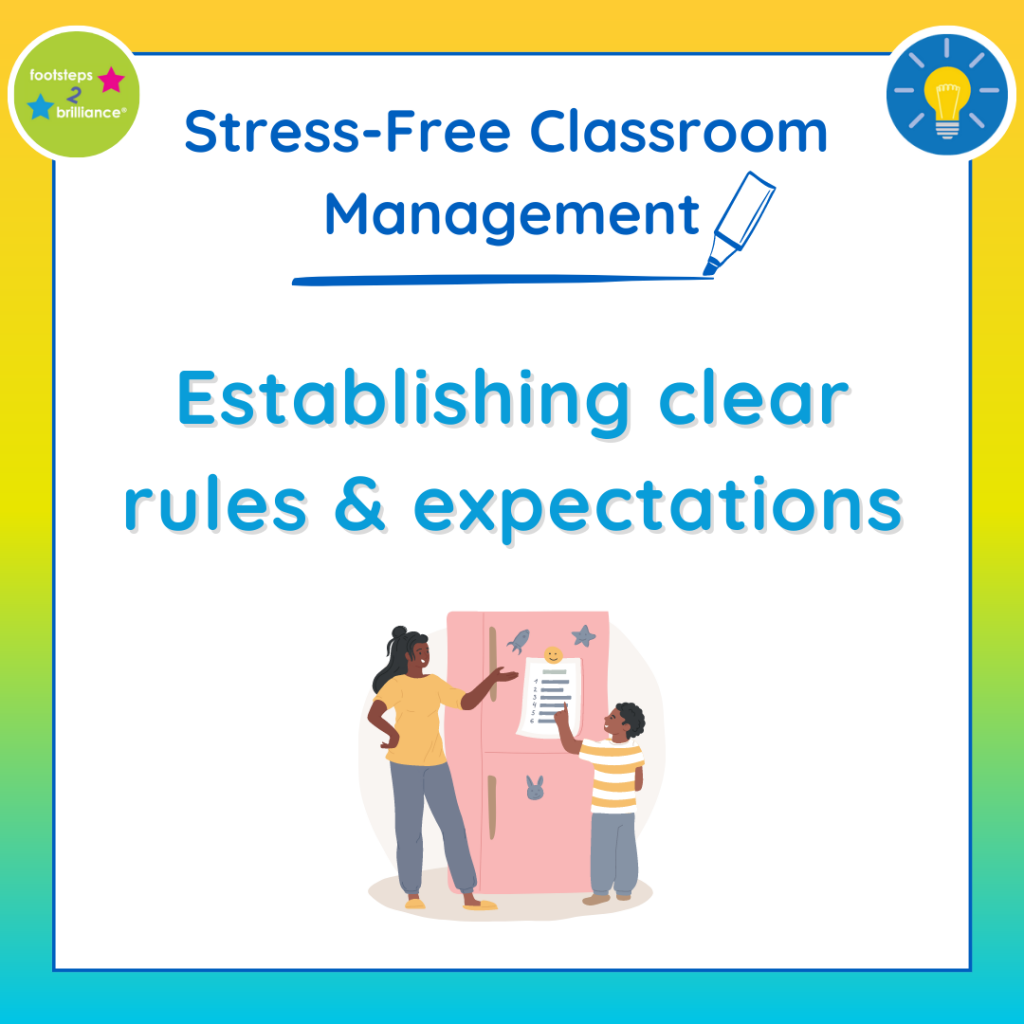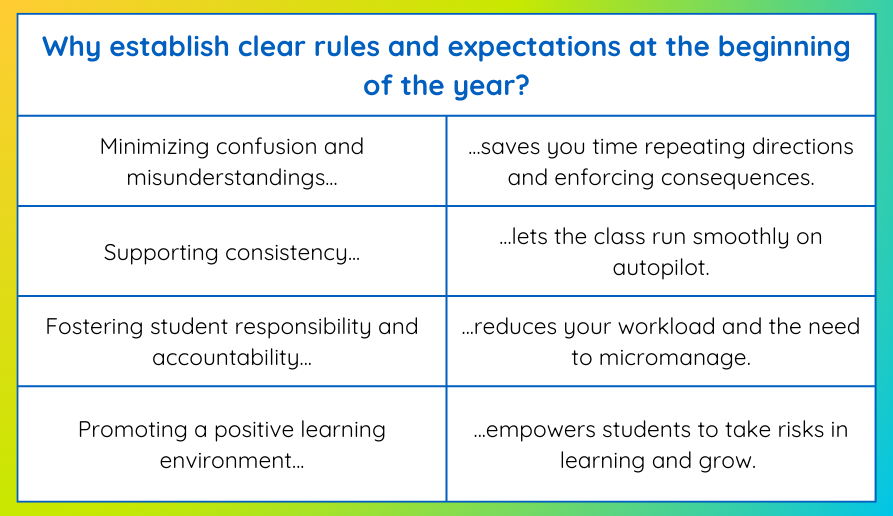
The new school year is starting and you’re feeling ready: your pencils are sharpened, kids’ name tags are printed, the floors are freshly waxed. The only thing left to do is welcome your new students into a classroom where they can thrive academically and socially. And while you may feel pressure to jump right into curriculum, the absolute best thing you can and should do in the first few weeks of school is establish the foundation that will make classroom management a breeze the rest of the year.
In this Teacher Tip Tuesday series, we’ll break down everything you need for year-long, stress-free classroom management. You can subscribe to our blog and follow us on social media to never miss a tip!
The magic of clear rules and expectations
Picture this: in your classroom, students understand what is expected of them, disruptions are minimized, and learning can take center stage. You can achieve this vision by proactively establishing clear classroom rules and expectations. Taking time to do this at the beginning of the year will help you manage your class’ behavior all year long.
How to craft effective classroom rules
Establishing rules and expectations that work for your classroom requires thoughtful planning and consideration. Here are six concrete steps to make it happen:
Involve your students
Involving students in the rule-making process can foster a sense of ownership, engagement, and deeper understanding. Begin by discussing the importance of rules and asking for their input on what rules they believe are necessary for a successful classroom. Make sure to facilitate the conversation in a way that guides students towards the rules you will establish. Students will remember the rules better and be more invested in following them if they are part of the rule-making process.

Keep it simple and specific
The best classroom rules should be easy to understand and specific in their wording. Avoid vague language. Opt instead for straightforward statements that leave no room for misinterpretation.

Use positive language
Frame rules in a positive light by highlighting the desired behavior rather than focusing solely on what’s prohibited. For instance, instead of saying “Don’t push or shove,” say something like “We will be safe and calm with our bodies.”
Limit the number of rules
While it might be tempting to outline an extensive list of rules, it’s more effective to keep the number manageable. Depending on the age of your students, 5-6 well-crafted rules are often sufficient to cover the essentials without being cumbersome to remember.
Explain the why
Provide context for each rule so students understand the reasoning behind it. Just like adults, when students understand the purpose of the rule, they are more likely to follow it.
Post and review
Once the discussion has taken place and everyone is clear on the what and the why of the class rules, create an anchor chart to refer to throughout the year. Have students sign their names (with appropriate support where needed). Display the rules prominently in the classroom and revisit them regularly. Take the opportunity to discuss and reinforce their importance throughout the school year, and not just when rules are being broken. Be sure to highlight behavior that positively reflects following the classroom rules, too.

Establishing clear classroom rules and expectations is the first and most important step toward creating a classroom environment where students can thrive. These guidelines provide structure, promote responsibility, and foster a sense of community within the classroom. By involving students in the process and crafting rules that are simple, positive, and easily understood, you can proactively set the stage for a successful academic journey all year long — with much less stress on your part!
Looking for more Teacher Tip Tuesday content? Visit https://www.footsteps2brilliance.com/category/teacher-tip-tuesday/
Not signed up? To learn how to provide your class with access to the Footsteps2Brilliance bilingual literacy program, click here, or sign up to speak to a Footsteps2Brilliance expert here.





